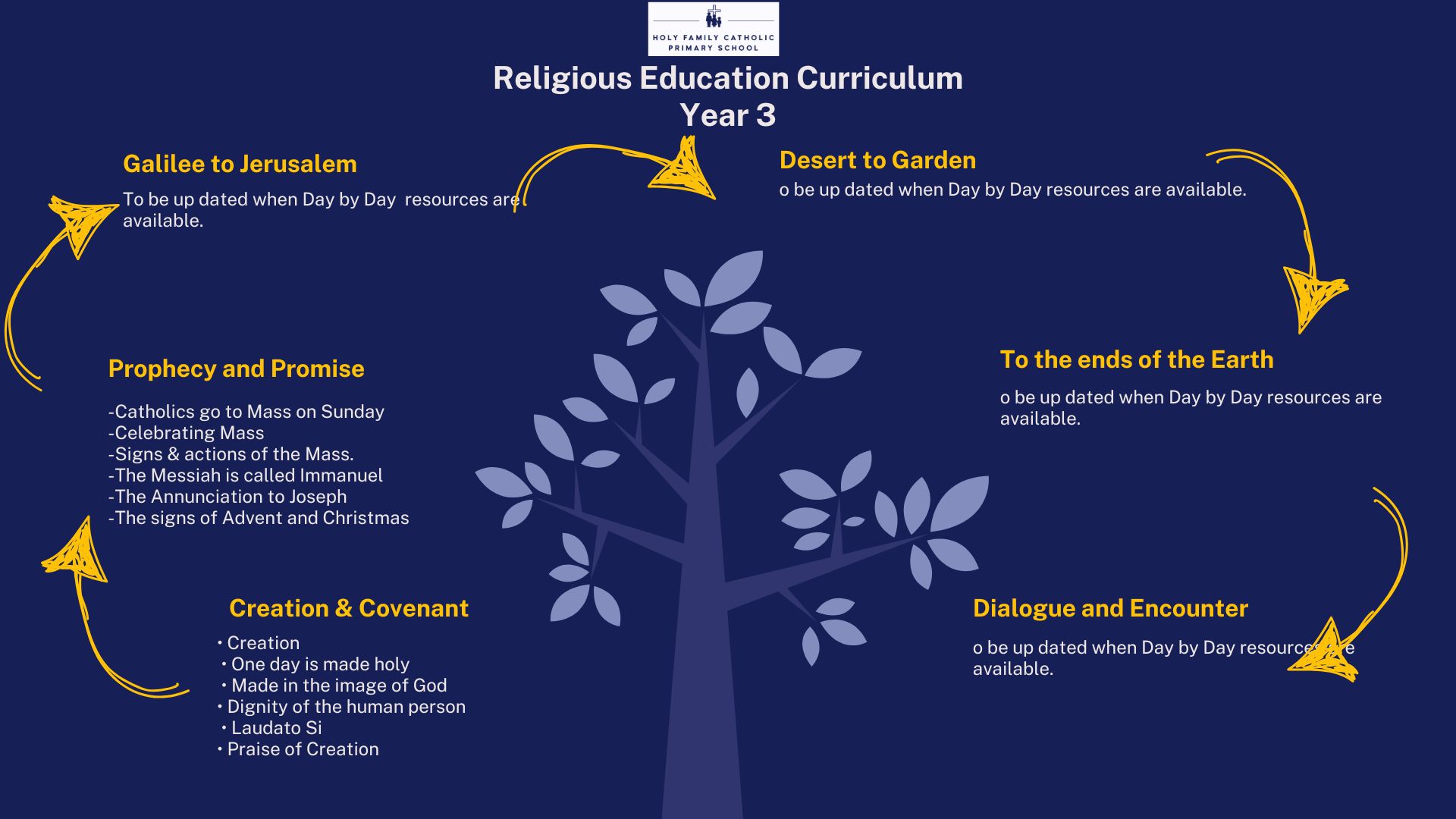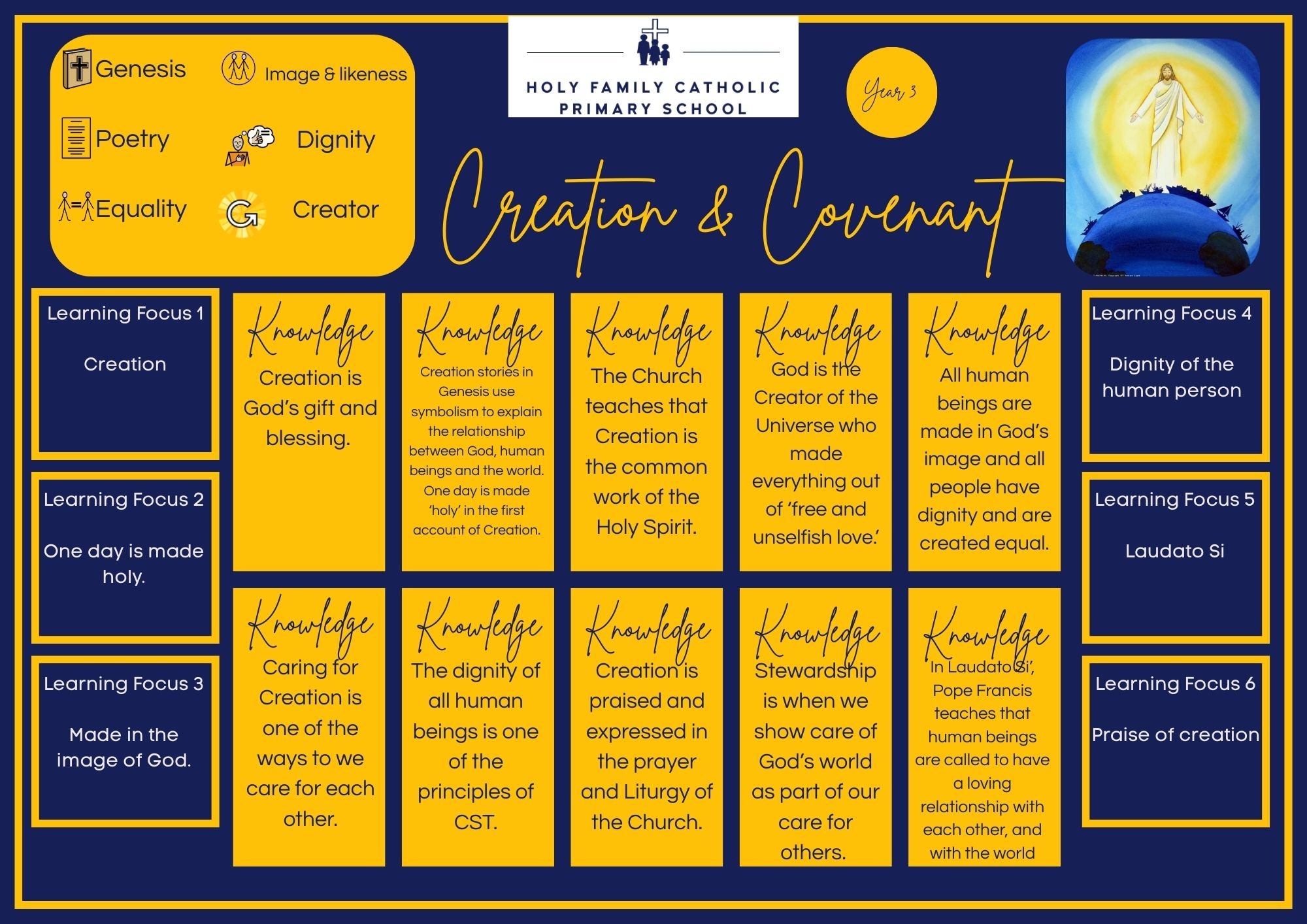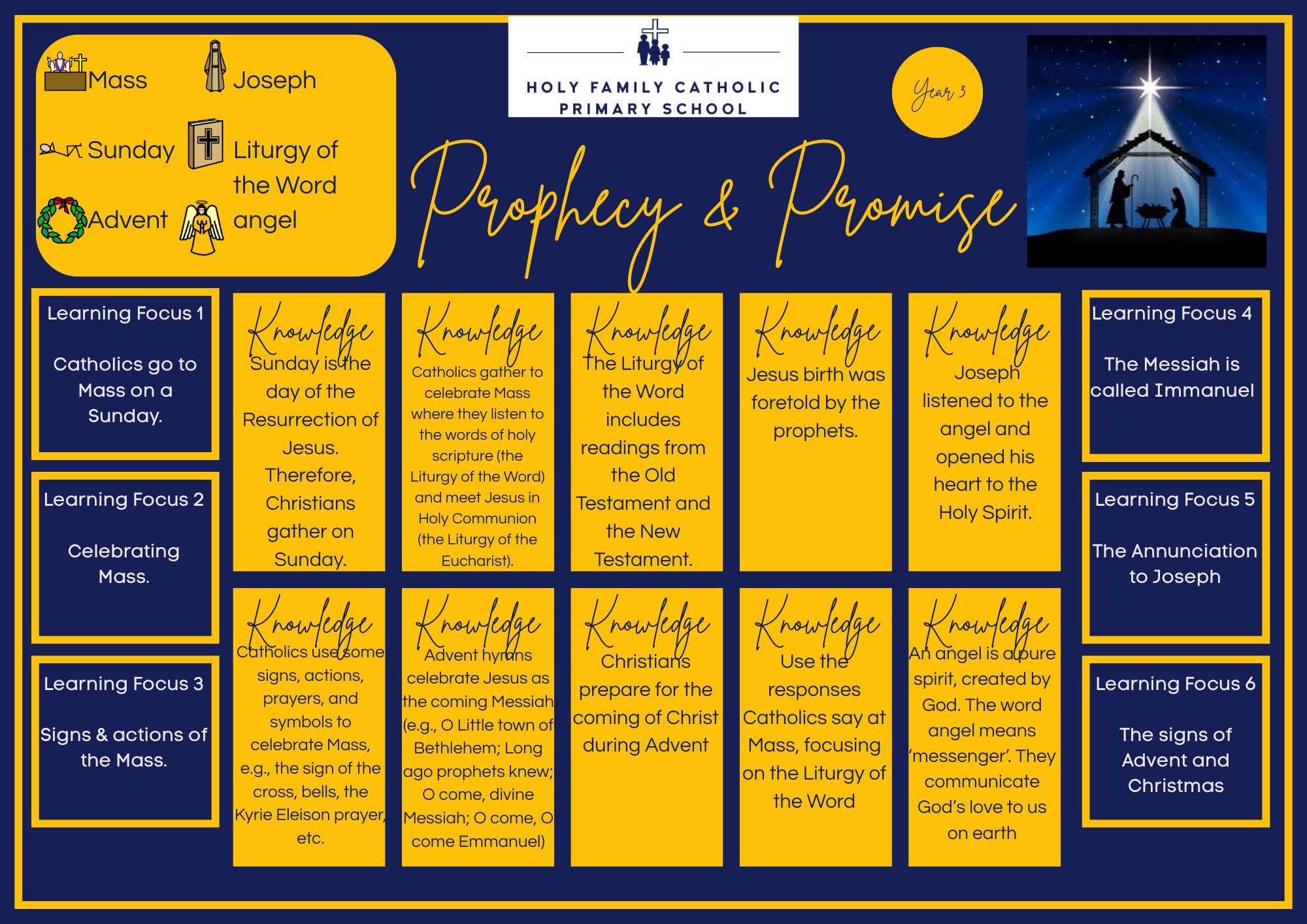Religious Education.

In line with our fellow Diocesan schools, we follow the Diocesan lesson plans based on the new RED. This curriculum seeks to present the teaching of religious education in a sequential and progressive form. The framework has four structural elements:
- Knowledge lenses which indicate what should be known by the end of each age phase. These are split into hear, believe, live and celebrate.
- The ‘ways of knowing’ are the skills which develop as the children progress through their curriculum journey. These are split into understand, discern and respond.
- Expected outcomes are set for each age phase and indicate what pupils are expected to know, remember and be able to do.
- Curriculum branches are the way the programme of study presents its model curriculum. There are six half term branches for each half term which are the same in each year group.
The overarching theme of this year is celebrating the Eucharist.
In the first branch the story of Creation, humanity, made in the image and likeness of God, is given the task of caring for the Earth, stewardship. At Mass, Catholics give thanks for the fruits of the Earth at the Offertory. In branches two and three, pupils will learn about what happens at Mass, making links with scripture, for example, the feeding of the five thousand and Jesus’ last supper.
Year 3 will also encounter different literary forms as they study parables and study the Gospel of St Matthew and learn about the signs of God’s kingdom in this gospel. They will be introduced to the mystery of Trinity. They will learn about how Jewish families celebrate the Passover today and some simple facts about Islam.

Knowledge Organisers for each branch can be found below.



